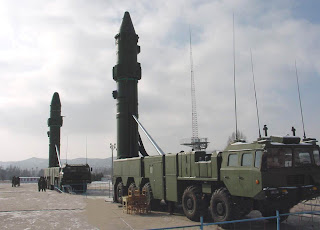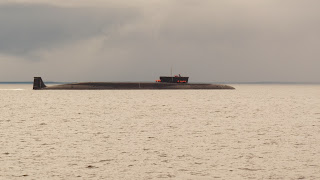Once more China
appears to have eliminated many, if not all, the flaws in its latest
SSBN (ballistic missile carrying nuclear powered boat, also called
"boomers") design. This is the Type 94 class sub, and one was seen
recently undergoing what appears to be sea trials.
China is eager to actually send one of its SSBNs out on a combat patrol. That’s because, to date, China has never sent an SSBN on a combat patrol. America, Russia, Britain, and France have all done so and still do. The U.S. has had SSBNs going out with nuclear armed, and ready to fire, missiles for over half a century. What is going on with China? There appears to be a combination of technical and political problems.
China has already produced two generations of SSBNs. In the early 1980s, the Type 92 SSBN was launched but had a lot of problems and never made a patrol. It only went out for training in Chinese coastal waters. Only one was built. In the last decade the Type 94 showed up. This was believed, in the West, to be the Chinese SSBN that would go on patrol. Never happened. Turns out that the Type 94 also had technical problems, and Chinese workers have been seen working on Type 94s for years.
This all began with the Type 93 class SSN (nuclear powered attack sub), which looks a lot like the three decade old Russian Victor III class SSN design. The first Type 93 entered service in 2006. The Type 93 was the basis for the Type 94 SSBN, which looks like a Victor III with a missile compartment added. Taking a SSN design and adding extra compartments to hold the ballistic missiles is an old trick, pioneered by the United States in the 1950s to produce the first ever SSBNs. The Chinese appear to have done the same thing with their new Type 93 SSN, creating a larger Type 94 SSBN boat of 9,000 tons displacement. Priority was apparently given to construction of the 94, as having nuclear missiles able to reach the United States gives China more diplomatic clout than some new SSNs. The first 94 entered service two years ago. But it still has not gone to sea equipped with nuclear missiles.
China is eager to actually send one of its SSBNs out on a combat patrol. That’s because, to date, China has never sent an SSBN on a combat patrol. America, Russia, Britain, and France have all done so and still do. The U.S. has had SSBNs going out with nuclear armed, and ready to fire, missiles for over half a century. What is going on with China? There appears to be a combination of technical and political problems.
China has already produced two generations of SSBNs. In the early 1980s, the Type 92 SSBN was launched but had a lot of problems and never made a patrol. It only went out for training in Chinese coastal waters. Only one was built. In the last decade the Type 94 showed up. This was believed, in the West, to be the Chinese SSBN that would go on patrol. Never happened. Turns out that the Type 94 also had technical problems, and Chinese workers have been seen working on Type 94s for years.
This all began with the Type 93 class SSN (nuclear powered attack sub), which looks a lot like the three decade old Russian Victor III class SSN design. The first Type 93 entered service in 2006. The Type 93 was the basis for the Type 94 SSBN, which looks like a Victor III with a missile compartment added. Taking a SSN design and adding extra compartments to hold the ballistic missiles is an old trick, pioneered by the United States in the 1950s to produce the first ever SSBNs. The Chinese appear to have done the same thing with their new Type 93 SSN, creating a larger Type 94 SSBN boat of 9,000 tons displacement. Priority was apparently given to construction of the 94, as having nuclear missiles able to reach the United States gives China more diplomatic clout than some new SSNs. The first 94 entered service two years ago. But it still has not gone to sea equipped with nuclear missiles.
.JPG)























.jpg)







